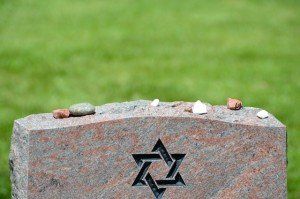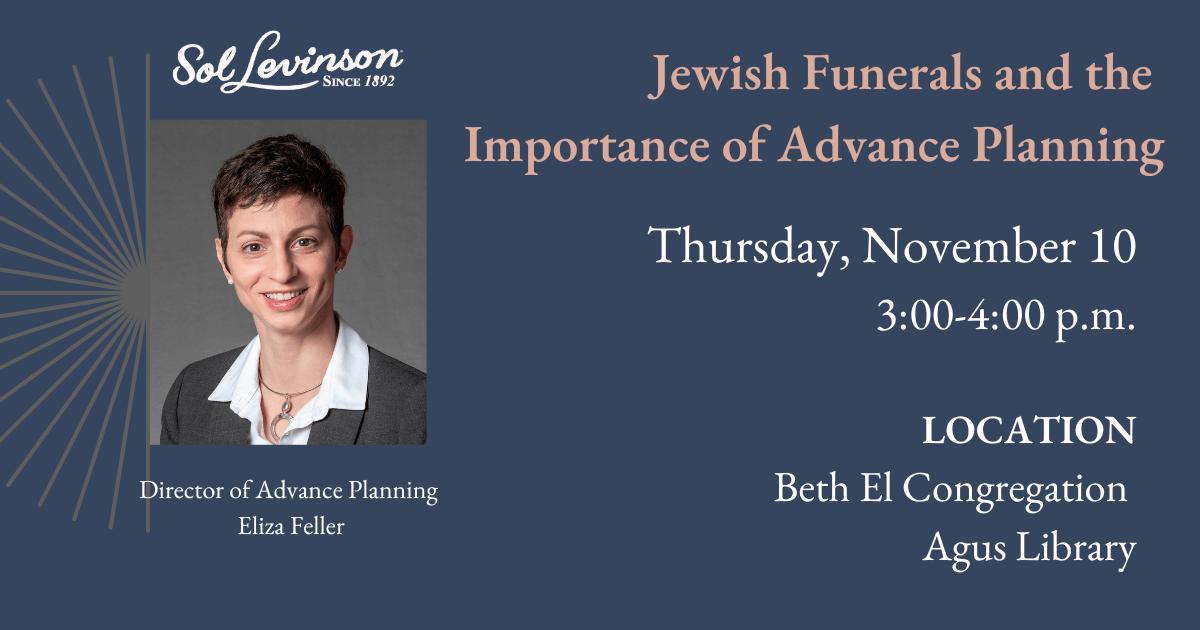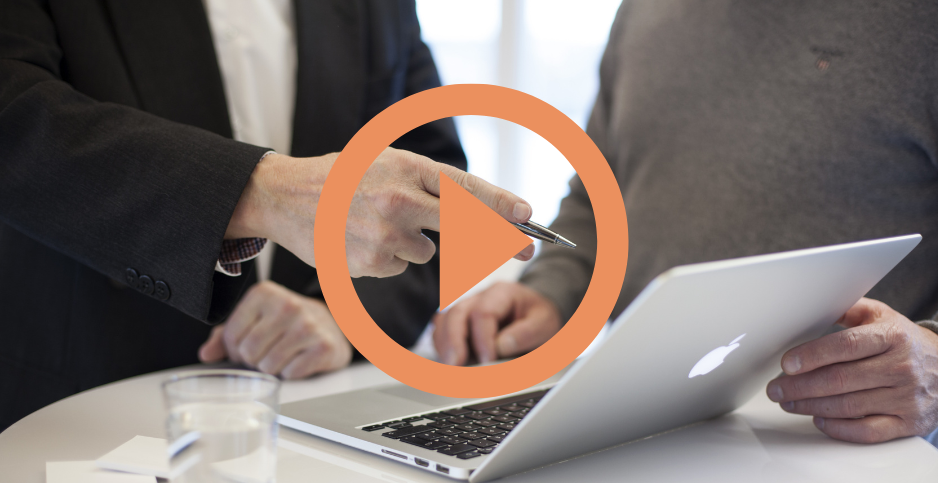


As our society evolves, how can we find meaning and purpose in our visit to the grave of a loved one? It can be difficult in our busy lives to find time to visit the cemetery, especially when many feel that the person is not really there in any tangible way. We spoke with several area rabbis to get their feedback about the traditional roots of the concept of a cemetery, as well as approaches you can take to visiting, and contemporary rituals you can perform to create a visit that is personally meaningful for you and your family.
The first thing to be said is that approaches, of course, vary based on a person’s level of observance and we always encourage you to ask your rabbi about options for visiting the cemetery. However, when it comes down to it, the visit is about you and your connection to the person who is buried there. This guide seeks to help strengthen that connection through visiting the cemetery. To that end, we are including responses from Rabbi Andrew Busch of Baltimore Hebrew Congregation, Rabbi Jessy Dressin who is Senior Director of Jewish Learning and Life at the JCC, Rabbi Steven Schwartz of Beth El Congregation, and Rabbi Yerachmiel Shapiro of Moses Montefiore Anshe Emunah.
What is the Jewish religious/historical background of cemeteries and the purpose of having an established burial place marked with a person’s name?
It is important to note that the tradition of having an established burial place goes back to the very first Jew, Abraham, who – as Rabbi Shapiro notes – went through a lot of hoops to pick the right location for a family place of burial. Rabbi Schwartz also points out that in Genesis 35:19-20, Jacob sets a stone to mark the place where Rachel is buried, and there is also an emphasis that “the dust returns to the earth as it was…” (Ecclesiastes 12:7). In the Talmud they even refer to a grave stone as a “nefesh” or soul.
The Jewish burial process is driven by the concept of “kavod hamet” or respect for the dead. This is interpreted as treating a deceased person as if they were still alive, including not delaying burial unnecessarily. To Rabbi Busch, the establishment of a cemetery fulfills kavod hamet in several ways – by providing for a respectful burial ground, by providing for the community, and by ensuring that everyone has an appropriate burial place regardless of their wealth. It also connects a family to their history in a particular community.
If we don’t believe the person is “there,” what significance does a person’s burial place hold?
Traditional Judaism believes that a spiritual remnant of the deceased- a connection to their soul remains forever at the grave. But depending upon one’s beliefs, many feel the person is no longer there at the cemetery in any tangible way. So why do we still go to the cemetery, if we don’t think it is any different than another space in regard to that individual? To begin with, a cemetery is still considered a holy place, due to the aforementioned concept of kavod hamet. It is the final resting place of a person’s body that was created in the image of G-d and that carried their soul through its earthly journey. Several of the rabbis mentioned that the sacredness or holiness of the space can enhance a visitor’s connection to the person. Rabbi Dressin reflects that a cemetery visit allows you to “think of them with special intentionality” given that the act of going to the cemetery can create a container of sorts of a specific moment in time. Therefore, by going to a designated place, that may be different than how you think about that person as you go along your daily routine.
There are also some important traditional reasons to visit a cemetery. It is customary to visit at holidays, birthdays, anniversaries and yahrzeits. Visiting a cemetery at certain milestones throughout the year is, as Rabbi Shapiro mentions, a way of continuing the relationship with that person and extending the concept of kavod hamet. You can even go and talk to the person and share news of family life such as weddings and births. It is also customary to visit at a time of need, whether you believe in the traditional view that prayer at a cemetery will allow your loved one to intercede with G-d on your behalf or you just need a quiet, meditative place to have that person in your mind when you are going through a difficult time. Some people go to the cemetery to have a focused place to talk about their issues out loud and feel they are sharing them with a loved one who is no longer physically present in their lives.
Especially in this age of people moving away from their hometown, why are cemeteries still important?
As stated at the beginning, cemeteries create a community space for burial and a sense of community history. Rabbi Schwartz points out that establishing a cemetery is typically one of the first things a community does to honor the dead and show “that a community has roots.” He also mentions that “it is comforting to have a known location where a body lies interred.” Rabbi Busch echoes this by saying that “even though they may end up moving…there is still some place to visit or to know that someone is taken care of, physically and metaphorically.”
For those who are unsure of where to be buried because their family lives in several different places, it is important to keep in mind whether you want to be buried in the community where you spent your life or, possibly, as Rabbi Shapiro mentioned, “why not be buried somewhere else, like near your children or other relatives, if nobody is going to come back to where you live. Ask yourself what would give your family the greatest peace of mind.” For some there is also some reassurance in knowing that, no matter where your family may move or eventually end up, a person has been given a final resting place.
What are the traditional rituals or readings to recite at a cemetery, and why?
Psalms are traditionally read at the cemetery and were meant to be a form of meditation. Often the 23rd Psalm is read. Some people also choose to recite El Maleih (the Memorial Prayer) and the Mourner’s Kaddish. These readings emphasize the traditional nature of a cemetery, which is – in Rabbi Shapiro’s words – a “place of contemplation, thought, and reflection.”
If you are not familiar with Mourner’s Kaddish and would like to practice it before going to the cemetery, the Hebrew and transliteration, as well as an audio recording, can be found on our website. All of the other readings can be found on this downloadable .pdf or by picking up one of our blue “Prayers of Comfort” books.
What are some creative new options for making a visit to the cemetery more meaningful, both for adults and children?
Rabbi Dressin emphasizes that “it is important to get over the barriers to going to the cemetery. There isn’t a rule about how you should feel when you visit a cemetery, and there are few restrictions about what you can or cannot do.” She encourages people to “think intentionally about the visit and create the necessary space to feel their presence or your sense of loss.”
As you plan your visit to the cemetery, Rabbi Dressin recommends asking yourself the following questions:
Rabbi Dressin also recommends the following activities: Share stories with other family who goes with you, especially with those who didn’t know the person as well. Think of things you liked to do with the person and reminisce about those things while there – if you did crossword puzzles together, bring a crossword puzzle. Bring a special stone with you, either a certain color or type of stone, a stone from your yard or vacation or that person’s favorite place. You can also have young children paint small river rocks and then spray with shellac to be left at the grave; or, if you are having a child make a craft for Mother’s or Father’s Day, have the child make an extra and take the child to leave it at the grave. If appropriate, bring another object – sculpt their favorite animal from playdoh, bring a pack of cards, a small figurine of a favorite object or animal. Pick a poem or song lyrics that remind you of the person and read it at the grave. If the visit to a cemetery is uncomfortable or too overwhelming to contemplate, consider keeping it short and planning a small family gathering for a bite to eat afterward, where you can sit in a more relaxed environment and talk about the person.
Rabbi Busch recommends singing a song the deceased liked, at the grave, which is an especially good way for a child to feel included. Or a child could sing their own favorite song. Rabbi Busch also suggests reading a poem or simply talking to your loved one. For Rabbi Schwartz, a nice way to bring more meaning to the visit would be to write a message to your loved one in advance and leave it at the grave, perhaps under a special rock. He also likes the idea of marking the occasion by having someone say a few words about the person.
Rabbi Shapiro encourages people to visit at difficult times and perhaps take some poems or meaningful meditations. He has seen people take solace in readings he refers to as “contemporary Psalms” such as the poem, “We Remember Them” and “Do Not Stand at My Grave and Weep.” While there is also a Jewish tradition not to turn the burial place into a type of idol to the person’s memory, Rabbi Shapiro also looks forward to how technology may one day be incorporated into monuments in order to provide information about a person’s life history or a slideshow for future generations to learn more about the person and feel connected.
How can your family create meaningful new rituals to make your visit to the cemetery more impactful? What does visiting the cemetery mean to you and your family? How does visiting the cemetery connect us to our family history and Jewish history? All of these are important questions to ask before your next visit. We hope this guide has offered a starting point for your contemplation.




*Restricted - operating out of Sol Levinson & Bros., Inc.